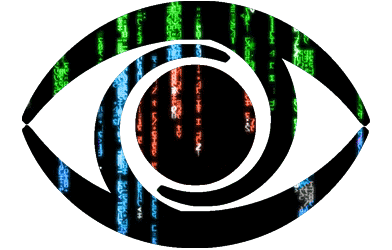Squib Games


- Intent: Create a computer virus as a story element for faction roleplay and as a component for later submissions.
- Image Source:
- Darkwire logo by
 Daiya
Daiya
- Matrix Waterfall Wallpaper
- Animation by me.
- Darkwire logo by
- Canon Link: N/A
- Permissions: N/A
- Primary Source: Slicer Virus | Ransomware | Phishing

- Manufacturer: SQUIB GAMES
- Affiliation: Darkwire
- Market Status: Closed-Market
- Model: N/A
- Modularity: Yes. As a computer program, various forks can be developed.
- Production: Limited
- Material: Bio-Hexacrypt Code


- Ransomware. With people's computer access and records at risk, there's plenty of motivation to pay up.
- Hard To Detect. It's designed to evade scanners.

- User Assistance Required. This virus must be uploaded and launched inside of the computer network. This requires that a user with authorized access take an action that results in the execution of the code. This could be the result of a phishing scam via Holo-Mail, or a Darkwire operative physically uploading the virus into a computer through a computer spike or other tool.
- Not A Good Look. Use of ransomware as a fundraiser is likely to generate hostility toward Darkwire from people who might otherwise be sympathetic to their cause.

.squib\\HACK was the CryptNet designation for a computer virus introduced by SQUIB GAMES in the mid-870s ABY. The form of the code identified it as a fork of Black Envy. The slicer virus was designed to mask itself from detection while it spread through the available network. Once the virus had mapped the available ports, a pyrowall was forced across the computer system which locked users out from accessing those computer files, records, or functions. Depending on the systems infected, this could wreck havoc -- such as if a ship's navicomputer was locked down, or if a bank's transaction logs were unable to be accessed. A ransom message typically followed, with instructions on how to securely wire funds to the terrorist organization known as Darkwire.
The virus could be disabled remotely, typically in combination with the payment of the ransom. Failure to pay or attempts to purge the virus could result in triggering the virus' failsafe function, which flash-cleared the infected systems, rendering the memory cores blank. Using the example of earlier, this would wipe an infected navicomputers star charts or a bank's record keeping and, thus, was very effective in motivating its victims to give Darkwire the credits required to unlock their computer systems. But some people or organizations may opt to bite the bitter pill and go for the flash-clear rather than deal with a terrorist organization.
Use of the ransomware by the group garnered significant negative attention by the galactic media.








